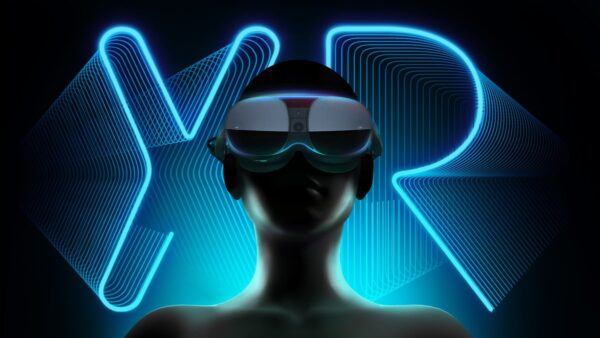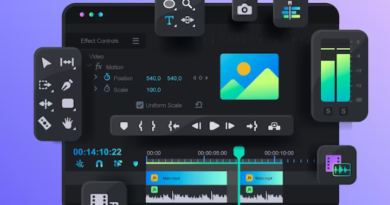Unveiling the Potential of Extended Reality (XR): The Next Frontier in Immersive Technology
What is Extended Reality?
Extended Reality, commonly referred to as XR, represents a transformative leap in technology, merging the digital and physical realms into an interconnected experience. XR encompasses Virtual Reality (VR), Augmented Reality (AR), and Mixed Reality (MR), each offering distinct ways to engage with and enhance the world around us. As these technologies advance, XR is poised to revolutionize sectors as diverse as entertainment, healthcare, education, and retail.
Breaking Down XR: The Three Pillars
Virtual Reality (VR):
VR fully immerses users in a simulated digital environment, effectively transporting them to new worlds. Using devices like the Oculus Rift or HTC Vive, users can experience realistic simulations, explore virtual spaces, and interact with 3D objects as though they were tangible. VR has become a cornerstone in gaming, virtual tours, and professional training, offering a level of immersion that was previously unimaginable.
Augmented Reality (AR):
AR enhances the physical world by overlaying digital elements onto it. Unlike VR, which creates a separate environment, AR integrates virtual content into the real world, offering an enriched experience. Popular AR applications include Pokémon GO, which introduces virtual creatures into real-world settings, and social media filters that augment photos and videos with creative effects. Retail is increasingly adopting AR to offer virtual try-ons and dynamic product displays, changing how consumers interact with products.
Mixed Reality (MR):
MR blends the real and virtual worlds, allowing users to interact with digital content in a physical context. Devices like Microsoft’s HoloLens enable users to manipulate digital objects within their real environment, bridging the gap between VR and AR. MR is particularly valuable in fields like architecture and design, where it allows professionals to visualize and modify digital models within the context of their real-world surroundings.

XR’s Transformative Impact on Industries:
Entertainment:
XR is revolutionizing entertainment by creating new, immersive experiences. VR gaming transports players into fully realized virtual worlds, while AR enhances live events and theme parks with interactive elements. In cinema, XR is enabling the creation of immersive narratives that allow audiences to experience stories in entirely new ways, blurring the lines between viewer and participant.
Healthcare:
The healthcare sector is embracing XR for its ability to improve training and patient care. Surgeons can practice complex procedures in VR, reducing risks and improving outcomes. AR can assist surgeons in real-time, overlaying vital information onto their field of view during operations. Additionally, XR is being used in therapeutic settings, providing immersive experiences that help patients manage pain, anxiety, and other conditions.
Education:
XR is redefining education by making learning more interactive and engaging. Virtual classrooms allow students to participate in lessons from anywhere, while AR brings textbooks to life with interactive 3D models and animations. MR enables hands-on learning by allowing students to interact with digital content in real-world contexts, making abstract concepts more accessible and easier to understand.
Retail:
In retail, XR is enhancing the shopping experience by making it more interactive and personalized. AR apps let customers see how products would look in their homes, while VR offers virtual store tours and customized shopping experiences. MR is being used to create interactive displays and virtual fitting rooms, allowing customers to try on clothes or test products without ever touching them.
Overcoming Challenges and Looking Ahead:
While XR holds immense promise, it also faces significant challenges. The high cost of development, hardware limitations, and the need for substantial computing power are barriers to broader adoption. Moreover, issues of privacy and the ethical use of immersive technologies are becoming increasingly important as XR becomes more widespread.
However, the future of XR looks bright. As technology continues to evolve, XR will become more accessible and integrated into everyday life. Advances in AI, machine learning, and 5G networks will drive the next wave of XR innovations, enabling even more seamless and immersive experiences. With these developments, XR is likely to become a central part of how we work, learn, shop, and entertain ourselves.
Conclusion: A New Reality Emerges
Extended Reality is not just an evolution of existing technologies; it’s a paradigm shift that will change how we interact with the world. Whether it’s through the immersive environments of VR, the enhanced realities of AR, or the interactive possibilities of MR, XR is unlocking new opportunities and reshaping our understanding of what’s possible. As we venture into this new frontier, the potential for innovation is limitless, and the impact on society is only beginning to be realized.
XR is more than just a tool—it’s the gateway to a new reality, one where the physical and digital worlds converge to create experiences that are richer, more engaging, and more meaningful than ever before.
FAQs:
1. What is Extended Reality (XR)?
2. How do VR, AR, and MR fit into XR?
- Virtual Reality (VR): Engulfs users in a fully digital world, disconnecting them from the physical space.
- Augmented Reality (AR): Adds digital enhancements to the real world, enriching what you see and interact with.
- Mixed Reality (MR): Fuses the physical and digital worlds, enabling real-time interaction between them.
3. What are the key uses of XR?
XR is revolutionizing several industries:
- Entertainment: Creating immersive experiences in gaming, virtual performances, and interactive storytelling.
- Healthcare: Enhancing surgical training, therapeutic treatments, and patient care through simulated environments.
- Education: Enabling interactive learning, virtual field trips, and hands-on training without physical constraints.
- Retail: Offering virtual product trials, augmented in-store experiences, and personalized shopping journeys.
4. What equipment is necessary to experience XR?
To engage with XR, specific devices are required:
- VR Headsets: Such as Oculus Rift or PlayStation VR, to dive into fully virtual worlds.
- AR Glasses/Devices: Like Microsoft HoloLens or AR-enabled smartphones, to blend digital content with reality.
- MR Devices: Devices like the Microsoft HoloLens 2, which allow for interaction with both real and digital objects simultaneously.
5. Is XR technology affordable?
While XR technology can be pricey, especially for high-end devices, the cost is gradually decreasing as the technology becomes more widespread. The future promises more affordable options, making XR accessible to a wider audience.
6. What risks are associated with XR?
Some potential risks include:
- Health Concerns: Extended use of XR devices can lead to eye strain, nausea, or dizziness.
- Data Privacy: XR technologies often collect personal and environmental data, raising privacy concerns.
- Overuse: The highly engaging nature of XR, especially in gaming, can lead to excessive use or addiction.
7. How is XR reshaping the workplace?
XR is transforming how we work by enabling virtual collaboration, immersive training, and remote teamwork. Employees can meet in virtual spaces, interact with digital tools, and engage in realistic simulations, making work more flexible and interactive.
8. Why is 5G important for XR?
5G is critical to the future of XR, offering the fast, reliable, and low-latency connectivity needed to support real-time immersive experiences. As 5G networks expand, XR experiences will become smoother, more responsive, and widely available.
9. Which industries are expected to benefit most from XR?
Industries such as healthcare, education, entertainment, and retail are set to gain the most from XR. These sectors can leverage XR to innovate their services, enhance customer interactions, and streamline operations.
10. What does the future hold for XR?
The future of XR is bright, with ongoing advancements in technology making it more powerful and accessible. As XR integrates further into daily life, it will revolutionize how we work, learn, shop, and play, offering richer, more immersive experiences.
11. How can businesses start using XR?
Businesses can begin by identifying areas where XR can enhance their operations, such as in training, customer engagement, or product development. Starting with pilot projects and gradually scaling up, companies can integrate XR into their strategies to stay competitive.
12. Can XR facilitate social and collaborative experiences?
Absolutely. XR opens up new possibilities for social interaction and collaboration in virtual spaces. Platforms like VRChat and AltspaceVR enable users to connect, collaborate, and socialize in ways that transcend physical limitations, fostering new communities and collaborative opportunities.




